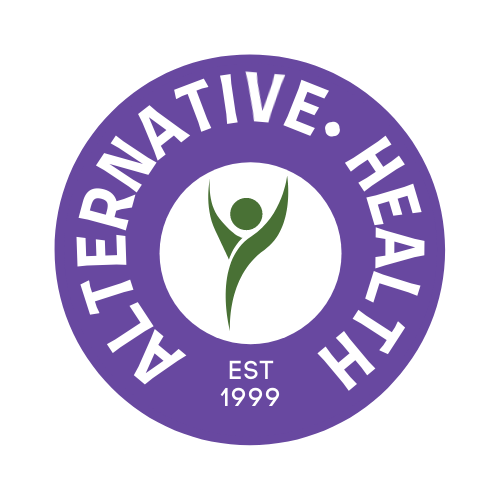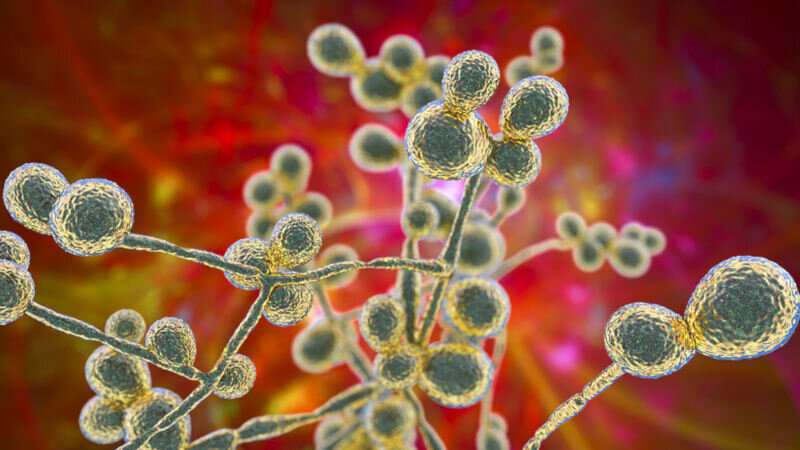What Is Candida and how do you live with it?
Put simply, Candida is a fungus, which is a form of yeast. Candida normally lives in the mouth, throat, gut, and vagina, usually without causing any problems. Under certain circumstances, Candida can actually be beneficial. Candida helps you digest your food and absorb the nutrients you need to maintain good health.
However, problems arise when there is an overproduction of Candida. The excess of Candida results in a yeast overgrowth called Candidiasis which can break down intestinal walls and enter into the bloodstream. Once this yeast overgrowth gets into the bloodstream, it can release toxic byproducts into the body and can spread to internal organs like the kidney, heart, or brain. Some species of Candida can cause infection in people, and the most common is Candida albicans. Candida albicans is an opportunistic pathogenic yeast that is a common member of the human gut flora. It can survive outside the human body. It is detected in the gastrointestinal tract and mouth in 40–60% of healthy adults.
Unfortunately, this Candida overgrowth can be caused by simple lifestyle factors such as poor diet, stress, high alcohol consumption, and even the overuse of antibiotics.
If left untreated, Candidiasis can manifest itself in the human body in any number of ways.
What Are Candida Symptoms?
The symptoms of Candida overgrowth can be various. Some of the most common Candida symptoms include the following:
Oral Thrush
Candida yeast overgrowth that develops in the mouth or throat is called “thrush.” It’s most common in newborns, the elderly and those with a weakened immune system. Individuals with poor oral hygiene or removable dentures are also at an increased risk. People with oral thrush typically develop white, bumpy patches on their tongue, inner cheeks, gums, tonsils or throat. The lesions can be painful and may bleed slightly when scraped. Oral thrush is also often associated with redness or soreness of the tongue and mouth. In very bad cases, it can spread to the esophagus and cause pain or difficulty swallowing. While many cases of oral thrush resolve themselves, effective oral thrush treatments often incorporate the use of prescribed antifungal medications.
Fatigue
One of the most common symptoms associated with Candida overgrowth is fatigue. While there’s no evidence that Candida causes fatigue, there are a couple of ways in which it could contribute to it. First, Candida overgrowth is often accompanied by nutritional deficiencies, such as vitamin B6, essential fatty acids and magnesium. Particularly, magnesium deficiency has been known to cause fatigue. Secondly, Candida overgrowth infections commonly occur when the immune system is weakened. A low-functioning immune system in itself may leave you feeling tired and fatigued.
Yeast Urinary Tract Infections
Candida is found in the vaginal tracts of most women. Candida overgrowth of it can lead to candidiasis of the vagina, also known as a yeast infection. It’s estimated that 75% of all women will get at least one vaginal yeast infection in their lifetime, and many will have at least one recurrence. Men can also get genital yeast infections, though it is less common. Symptoms of vaginal candidiasis include redness, swelling, itching, painful intercourse and a thick, white discharge from the vagina.
Candida overgrowth can also cause a urinary tract infection (UTI). Candida-related urinary tract infections are most common in the elderly, hospitalized or immune-compromised individuals. Symptoms of a UTI include a burning feeling when you urinate, a frequent urge to urinate, cloudy, dark or strange-smelling urine and pain or pressure in your lower abdomen.
Digestive Issues
The health of your digestive system relies heavily on a good balance between the “good” and “bad” bacteria that live in your gut. The “good” bacteria that normally reside in your gut are important for digestion, as they help process starches, fibers and some sugars. When the bacteria in your gut become imbalanced, you can experience digestive issues, including constipation, diarrhea, nausea, gas, cramps and bloating. Candida overgrowth is associated with several diseases of the gastrointestinal tract, including ulcerative colitis and Crohn’s disease.
Sinus Infections
Chronic sinus infections affect one in eight adults in the US. Common symptoms include a runny nose, nasal congestion, loss of smell and headaches. Although short-term sinus infections are mostly caused by bacteria, many longer-term, chronic sinus infections are believed to be fungal in origin. Antibiotics are the usual method of treating sinus infections. This may work for acute bacterial sinus infections, but not chronic fungal ones. If you have sinus infections that last longer than one month, Candida overgrowth may be to blame.
Skin and Nail Fungal Infections
Just like in your gut, there are bacteria on your skin that prevent Candida overgrowth. All bacteria thrive in different conditions, including varying temperature, moisture or acidity levels. That’s why a change in the environment on your skin can allow Candida overgrowth. For example, cosmetics, soaps and moisturizers can alter skin conditions, especially the antibacterial varieties. While skin candidiasis can affect any part of the body, areas that are warm and moist, such as the armpits and groin, are particularly prone to infection. Itching and a visible rash are the two most common symptoms of skin fungal infections. Candida overgrowth can cause conditions like athlete’s foot, ringworm and toenail fungus.
Joint Pain
If a Candida overgrowth infection enters your bloodstream and travels through your body, it can infect the joints and cause arthritis. This typically happens after surgery or when a Candida overgrowth is left untreated for an extended period of time. Candida arthritis is associated with pain, stiffness and swelling in your joints. Hips and knees tend to be the most commonly infected. Candida overgrowth can also cause bone infections, or osteomyelitis, which can cause pain and tenderness in the infected area.
What Is a Candida Cleanse?
The Candida Cleanse, sometimes referred to as the Candida diet, is a way to address Candida overgrowth. The goal of the Candida cleanse is to reduce the amount of Candida fungi in the body. The Candida cleanse is marked by a reduction in refined sugars, carbohydrates, and high-lactose dairy products in a person's diet.
What Is the Best Way to Combat Candida Overgrowth?
M’lis TRANQUILITY is an enhanced stress-relieving formula with the ability to help calm the nervous system and promote relaxation. Natural ingredients work synergistically to alleviate symptoms without chemicals and without the tendency for addiction. When taken throughout the day, TRANQUILITY will not cause drowsiness, but will help aid in calming the nervous system. When a person’s overall nervous system is calm and not overly taxed, Candida overgrowth is far less likely to occur.
M’lis Probiotic is used nutritionally to control acne, help reverse and improve immune functions and many other aspects of cell renewal. Probiotics are beneficial live bacteria that when administered in adequate amounts, produce positive health benefits for the host in which they live. There are many more beneficial microbes in the environment and in the human body than harmful ones. By using friendly microbes to control the population of hostile ones especially after times of intense stress, infection, antibiotic therapy, or any event that may cause immune system depletion, probiotics are known to maintain or revive health. The use of probiotics can help maintain a strong immune system, which can greatly contribute to preventing Candida overgrowth.
How Can ZYTO Help Detect the Presence of Candida Overgrowth?
A ZYTO scan sends stimuli directly to the body, while receiving and recording galvanic skin responses that give insight about wellness issues. What could you find out from a ZYTO scan? Energy imbalances like Candida overgrowth can be detected by a ZYTO scan. A properly conducted ZYTO scan can help to determine when fatigue is more than just fatigue! A ZYTO scan may be your best bet to pinpoint if Candida overgrowth is at the root of your problems. Take the first step to better health by scheduling your ZYTO scan today!


